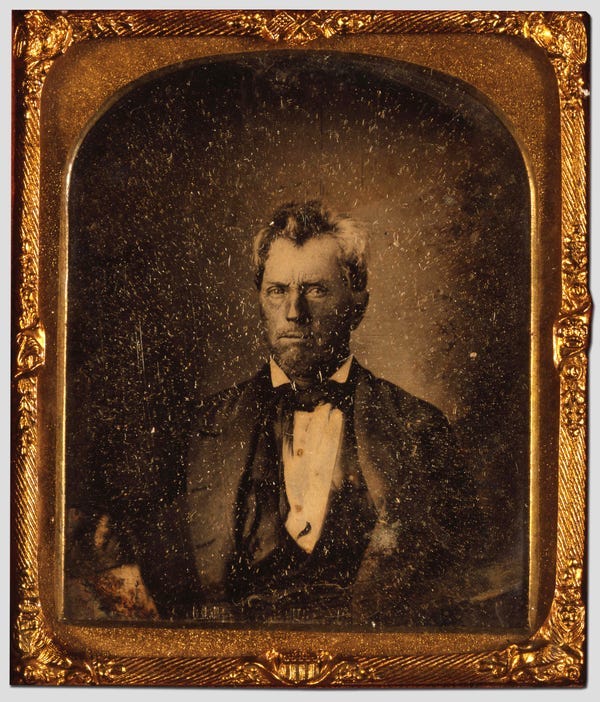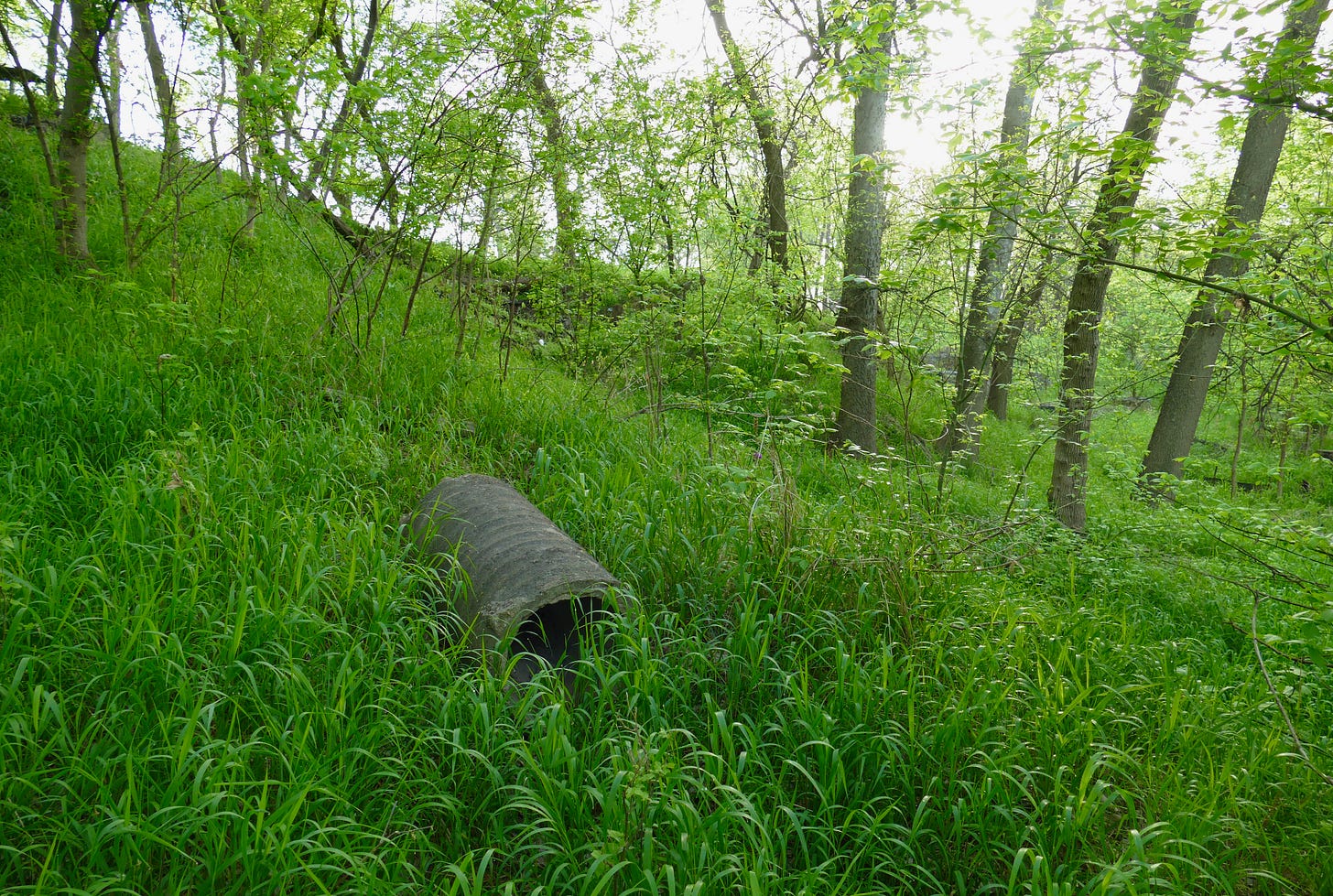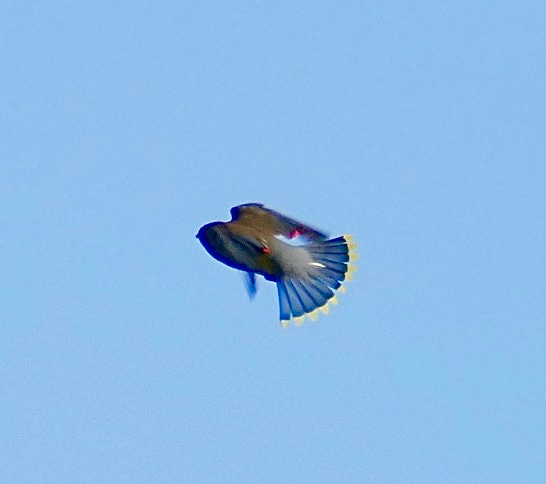How to swallow a waxwing
The waxwings have hung around late this year. They usually move on before the hackberrys come back to life, after they do the best they can to eat all the tiny fruits left on the trees at winter’s end. But this year winter ended with a week of real winter, a weather event that we learned this week killed at least 111 people, mostly from the cold. The paper carried a gruesome story about the number of frostbite cases they saw in the ER, mostly among people living outside, most of them warm country people who had never been taught the dangers of real cold. One hospital shared a report on the exact number of feet and toes they amputated, a statistic that illuminated the dark nexus of nature’s harsh power and our own ability to ignore the suffering of our neighbors.
You can see the subtle impacts of that week on the new season that is emerging in full force this week, the first official week of spring. The snow and ice seem to have checked the invasive grasses that grow early and crowd out the natives, and now the inland sea oats that do so well in the shade have filled up the understory of the urban forest like a lush green shag carpet, so thick it covers up the trash in the floodplain, or at least most of it.
It may be too early to tell, but signs are good for the coming wildflower crop, even though it is a couple of weeks delayed. The spiderwort is everywhere, the Texas star that had already started to grow before the storm came through singed but strong, and the goldenrod is coming up thick and green all over the yard. The first batches of pink evening primrose are blooming along the drainage ditches. And the bluebonnets are ready for their photo ops down on the rock beach where they used to dredge gravel.
The mesquite trees are starting to show some green, and the bois d’arcs, but the other thorned trees are struggling. The huisache, which normally would have bloomed with their bright golden pom poms by now, look close to dead. And the retama, hardy green volunteers that thrive in the crazy heat, seem definitely dead, but they never live that long, and are quickly replaced by their offspring.
Monday night brought big thunder, a storm that woke us up at 1 a.m. with lightning and hail and a lot of water. More rain came over the next two days, and as the sun broke, the cross vines that hang from our roof, which had looked like they maybe weren’t going to make it, exploded with a density of flora I have never seen. The hummingbirds better hurry up.
The first bats started to show up in the evenings, in the hour before sunset. The cliff swallows, who live and hunt a lot like the bats, haven’t really been out yet. Maybe that’s why, the morning after the storm, the waxwings were down on the river, imitating the swallows—taking turns dancing over the water, grabbing the bugs from the air while their flockmates chattered in the young sycamores along the banks. I’ve never seen waxwings hunt like that—only foraging the easy pickings of small fruit from trees and bushes—and it made me wonder what caused this change in behavior.
And when I saw them, I was so busy trying to photograph their aerobatic flight show that I almost missed the osprey that flew right over my head, as if trying to scatter these little clown car birds from the majesty of its habitat.
The osprey are another sign of spring in these parts, and when I posted this pic my friend Matthew reported that a couple of the fish he had caught near here this week had talon marks on their backs.
What you can’t see in this photo is the ugly new parking garage rising up over the treeline below, but the osprey don’t seem to mind. Indeed, I’ve seen them expanding their urban domain lately, into the deeper waters of the dammed lake around downtown.
The osprey didn't really seem to mind the waxwings, either, and the feeling looked to be mutual. I guess osprey don’t ever hunt other birds.
When our Kishu dog was just a puppy who seemed part wolf and part Pokemon, my wife caught him with a live bird in his mouth. She tried to get him to release it. When she came for it, his response was to swallow it, whole, even though that seemed physically impossible. I was at my office, and when she called to tell me and I asked her what kind of bird it was, she gave a description that made it sound like some kind of oriole. Now I wonder if maybe it was a waxwing.
The change in the weather has the humans out roaming, too, many of them looking a little more feral than past seasons. Urban foragers slipping along the chain link looking for what the storm might have left behind, pent-up partiers ready to take the masks off, and a few edgeland lopers walking on to the next town. You can feel the accumulated Covid crazy working itself out as people emerge from winter into an especially gorgeous spring. At night we’ve heard fireworks, and gunshots.
Thursday morning we woke to a find a massive military troop transport parked behind the county yard, modified to carry a camper bed bigger than some of my old apartments. When I first saw it as I grabbed our newspapers, the cab was tilted forward and the engine exposed, and a little later I chatted with the guy whose feet I had seen sticking out from under that Damnation Alley-worthy ride. He was a lean young white guy in T-shirt and ball cap who proudly gave the 101 on his truck, explaining he had stopped for some preventive maintenance before he moved on. He had Kentucky plates, parking stickers in the window from a county park upriver, and red mud on his flaps, and said he was just passing through. He had a two-seater motorcycle as the dinghy for his rugged land yacht, and Thursday evening as I pulled out the trash bins you could hear the high-pitched laughter of his guest or traveling companion inside the cabin. Friday night as I was practicing guitar in my trailer they rumbled off and quickly returned on a test run, or maybe a beer run, with all the lights on. Mid-morning Saturday they were gone. They were the first real-deal pandemic nomads I have encountered. I hope they never have to stop.
On the lawn of the abandoned light factory around the corner, the mystery shrine I reported on a couple of weeks ago was augmented this week, deepening its mystery while clarifying its message. The tiny cross of twigs was complemented with a larger cross of cut bamboo, tied with the same purple yarn and some brown wire, garlanded with one red fake flower, and anchored with a metal bearing and a big rock. The convex side was painted with some metallic flake, and in the cavity on the other side, in handwriting almost too small to read, was scrawled a declaration of divine love. It had a surprising persuasiveness, maybe because of rather than despite its situation in such an unlikely place for the light to shine.
Reading list
Speaking of enigmatic artifacts, Monday’s NYT had a remarkable story about the Shigir Idol, a wooden sculpture preserved in a Siberian peat bog that some scientists now believe to be 12,500 years old. “Whether it screams or shouts or sings, it projects authority, possibly malevolent authority,” said one of the German archaeologists on the team, speaking of the idol’s face. “It’s not immediately a friend of yours, much less an ancient friend of yours.” The story, and the journal article it distills, reminds us just how much early culture was encoded in wooden objects that disappeared, and how little we really know about our own deep past. It also poses interesting and provocative questions about life during another period of intense climate change.
In Tuesday’s Austin American-Statesman, the always-interesting Michael Barnes has an outstanding feature that provides a concise history of the Anglo-Texan slaughter of the Native American populations they found here at the time of settlement, in a review of Gary Clayton Anderson’s incisively titled “The Conquest of Texas: Ethnic Cleansing in the Promised Land, 1820-1875,” which I look forward to reading.

I had the good fortune to receive an advance copy of Rachel Kushner’s new essay collection, The Hard Crowd, which will be out on April 6 in hardcover, ebook and an unabridged audiobook read by the author. It includes one beautiful piece, “Bunny,” about my late brother Alex Brown, and a couple of cameos by him in the title essay, so I’m biased in favor of the book. But The Hard Crowd really is an outstanding collection of work that showcases what a master of the personal essay Kushner is, in pieces spanning two decades and a wide range of subject matter, each of them charged with feeling and memory and a powerful voice armored with a rare toughness that feels rooted in the century we came from but unafraid to leave it. One can’t help but think of Joan Didion when reading Rachel Kushner’s nonfiction, and the comparison is favorable (and Kushner is a lot cooler). She doesn’t need any help selling books, with excerpts in The New Yorker and Harper’s, but I highly recommend The Hard Crowd.
I was sorry to read yesterday of the death of Larry McMurtry. One of my big regrets as a Texas literary nerd will always be that I never made the trek to his famed bookstore in Archer City while he and it were in their prime, despite various plans with friends to make a weekend centered around just that activity. And I will confess that I have never read Lonesome Dove. But I love McMurtry’s Houston books, which I was turned on to by my brother after I moved here and he hooked me up with All My Friends Are Going to be Strangers. That book’s opening scene is a window into a greener and mellower Austin whose ghosts I encountered when I moved here in the 90s but is now long gone, just one facet of the ways McMurtry could riff an upbeat melancholy that told the truth.
Next weekend I will be participating in a virtual edition of Norwescon, Seattle’s annual SF convention. My most recent novel Failed State is a finalist for the Philip K. Dick Award, the winner of which will be announced Friday night, and the other nominees and I will be reading and potentially on some panels, along with a ton of other great-looking programming. Hope to see some of you there, and looking forward to a not-too-distant future when we can have such gatherings in person again.
Lastly, I didn’t know until the news this week that the crisis was over that there has been a nationwide shortage of Grape Nuts cereal. It was an unlikely headline to read about such a retro product, one whose mention triggers memories of childhood television ads featuring the first real-deal forager I was ever exposed to: Euell Gibbons. It reminded me of this amazing piece I have been carrying around for a while, John McPhee’s profile of Gibbons for the March 29, 1968 issue of The New Yorker. If you are a subscriber, you can access a facsimile copy of the piece, cartoons and ads and all.
And if you have never seen this ad, you really need to watch it.
“Did you know goldenrod makes an excellent tea?”
Speaking of foraging, now that spring is here I am going to get out and do some of that myself, along with some invasive species mitigation, and I anticipate these notes will be a lot shorter for the next few weeks. Not to suggest you will mind.
Have a great week, and maybe go eat some flowers.












